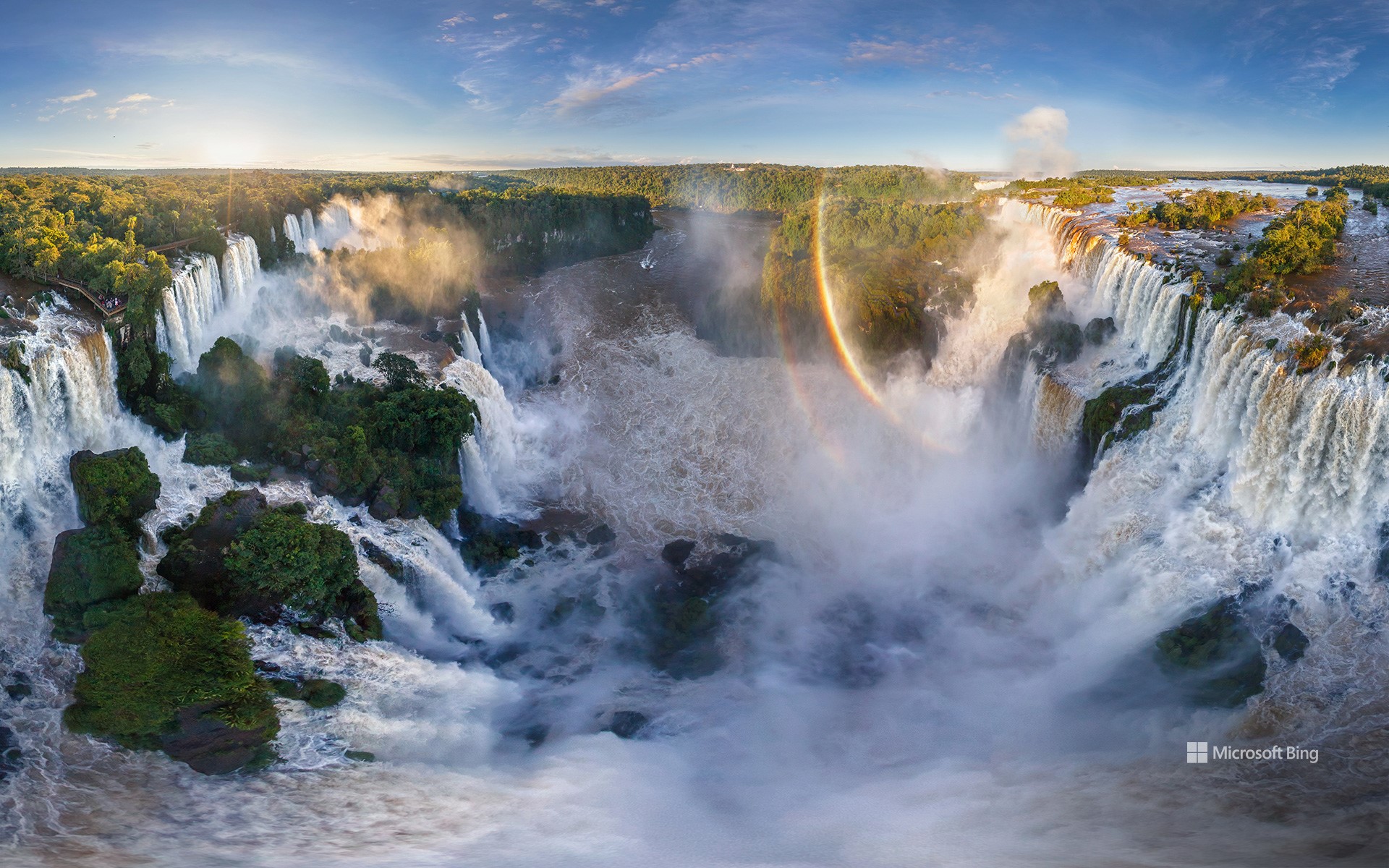阿根廷和巴西边境的伊瓜苏瀑布 Iguazu Falls at the border of Argentina and Brazil (© AirPano LLC/Amazing Aerial Agency)

阿根廷和巴西边境的伊瓜苏瀑布 Iguazu Falls at the border of Argentina and Brazil (© AirPano LLC/Amazing Aerial Agency)
“大水”中的彩虹波 Rainbow waves in 'big water'
阿根廷和巴西边境的伊瓜苏瀑布
想亲眼目睹让尼亚加拉瀑布都望尘莫及的壮观瀑布吗?让我们走进世界上最大的瀑布群——伊瓜苏瀑布。“伊瓜苏”这个名字来源于瓜拉尼语或图皮语,意思是“大水”。这些瀑布群由伊瓜苏河形成,位于阿根廷米西奥内斯省和巴西巴拉那州的交界处。它们拥有独特的阶梯状结构,是由三层玄武岩形成的两级阶梯式瀑布,非常引人注目。
在这些瀑布成为我们今天所熟知的旅游胜地之前,它们经历了一段相当漫长的旅程。西班牙探险家阿尔瓦·努涅斯·卡韦萨·德·巴卡可能是第一个看到这些瀑布的欧洲人。1917年,商人多明戈·阿亚拉加雷看到了这个地区的潜力,并建造了酒店和道路。随后,这个瀑布群成为了一个热门的旅游胜地。于是在1934年,阿根廷建立了伊瓜苏国家公园。在1939年,巴西也建立了伊瓜苏国家公园。联合国教科文组织分别在1984年和1986年将这两个国家公园列为世界遗产,并认定它们具有“杰出的普遍价值”。
Iguazu Falls at the border of Argentina and Brazil
Welcome to Iguazu Falls, the largest waterfall system in the world. The name 'Iguazu' has its origins in the regional languages Guarani or Tupi, meaning 'big water.' These epic waterfalls are formed by the Iguazu River, on the border of Argentina's Misiones province and Brazil's Paraná state.
The Iguazu Falls have long attracted admirers. Spanish explorer Alvar Núñez Cabeza de Vaca is thought to have been the first European to see them in 1541. In 1907, businessman Domingo Ayarragaray saw their potential and built a hotel and roads nearby. The falls became such a sensation that they were designated as national parks in both countries—Argentina's Iguazu National Park in 1934 and Brazil's Iguaçu National Park in 1939. UNESCO made the parks World Heritage Sites in 1984 and 1986, respectively. Surrounded by the rainforest, the falls are made up of hundreds of cascades and channels carved over millions of years by the Iguazu River, the tallest of which is the U-shaped Devil's Throat, at 269 feet high.
评论已关闭